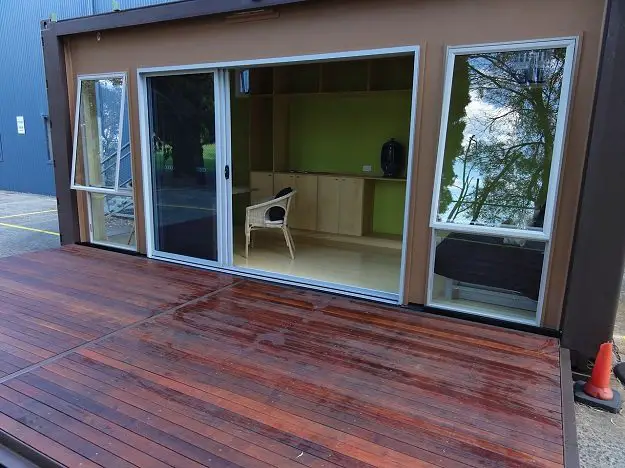The seal of the door frame in the closed position could have taken many different configurations. I decided to go with an angle bar around the outside edges of the deck to close the gap when closed against the container. As we would be leaving the container on the block of land in a high fire zone I wanted to minimise gaps and spaces for debris, animals and weather. This worked well once the door was under tension from the winch and would be made a tighter seal if a rubber strip was added along the top face above the opening.
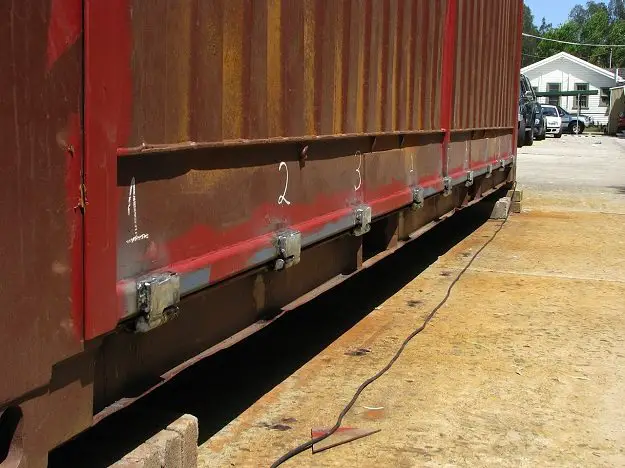
To attach and hinge the deck we used Goliath Ball Hinges. Avaialble at Bunnings or online these are strong and reliable hinges. We alternated the nine hinges (left and right settings) to locate the door in position. We used nine hinges to distribute the load, but may have gotten away with fewer.
Once the door panel was in place we worked on the internal walls and cladding. Finding suitable, level and consistent fixing points on the walls and frame of the container was problematic. This was due to the dents and discrepancies within the container panels. With some packing material and creative placement we set the wall and ceiling frames. It should be noted that my frame work was dimensioned for the fixing points of the kitchen shelf unit, hence the irregular spacing and, again, over engineering and construction. The walls were clad with Gyprock to maximise the finish of the walls and improve the feel of the space. However, and this is a reoccurring problem with mobile products, the plaster joins were susceptible to cracking whilst in transit.
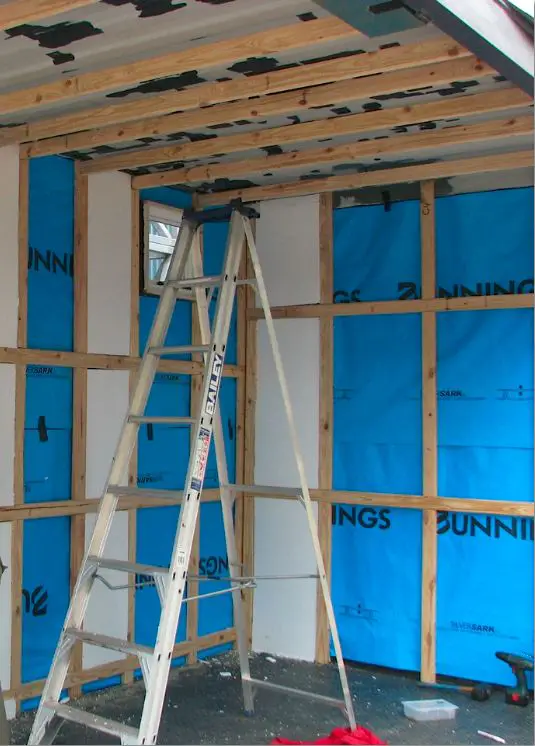
We had hoped to find an appropriate insulation material for the container, but ended up using polystyrene panels cut to fit into the frame work. This provided great insulation during direct sun in summer and retention of heat in the cooler months. To double up on the insulation we used a perforated sarking to assist the reflection of heat from the steel panels.
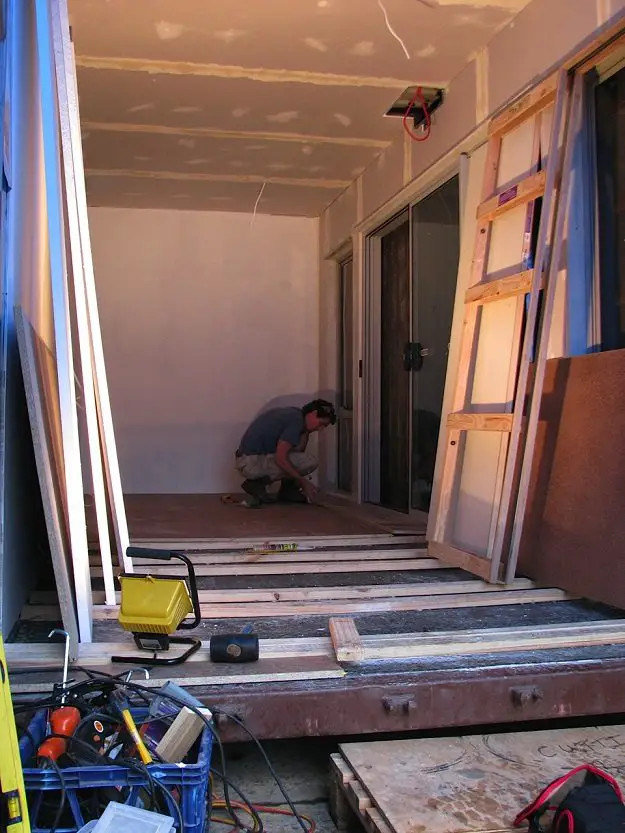
The internal floor was fixed to the steel deck of the container. This allowed us to insulate and level off the floor as well as line it up with the external deck once in the down position. The internal floor was then clad with a floating bamboo floor with a 15mm panel to ensure the density added to the feel of the room. Once down and the room lined we found we had a very “solid” space, far from the tinnie nature of the container we were converting.
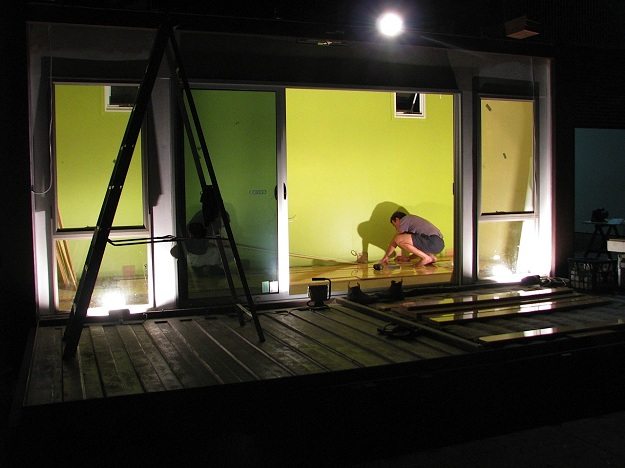
Our primary focus was to ensure we maximised the view from one side of the container across the deck and down the block of land. We found some excess window stock from a building site, including the glass sliding door and a pair of windows. We then lucked upon some smaller windows on eBay that worked well for the opposite side. These smaller windows wound out, improving ventilation and adding a little extra light.

